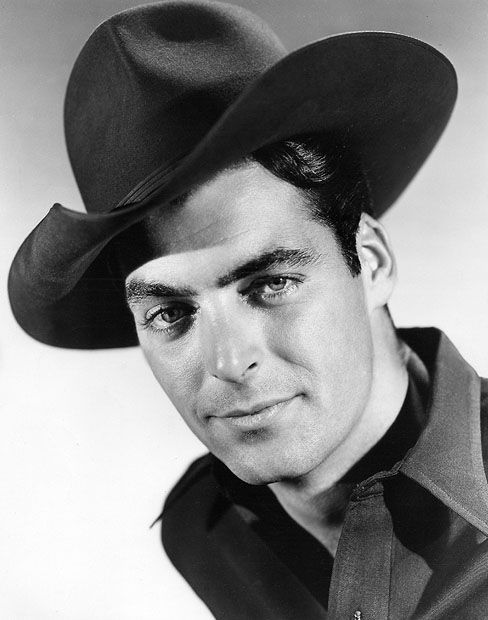Hi guys! For the past… ever, I’ve been putting my health and fitness aside. I tried a few times to get into the habit of exercising to no avail. I’m not overweight or anything but neither am I strong or flexible as I want to be. Mainly because I don’t want to have health troubles later in life. HOWEVER, to get started I needed to google of course and… best 10 xyz, do this, don’t do this, you breathe wrong, you stand wrong, you do everything wrong, this is the only solution. All of these can be found about anything related to fitness. How does one get started with all this nonsense, misinformation and clickable? What’s even real anymore? Thank you in advance :)
Exercise used to feel a lot more like work until I started listening to podcasts during my runs and weight training. Now I cue up episodes that interest me in advance and actually look forward to it. Most of the time.
Also I found starting slow and easing into shorter workouts lowered the barrier to entry for me. Then gradually added to my workouts in length and difficulty. Doing something is better than nothing.
If you’re not overweight and simply want to become more athletic I personally think the most important thing to do is to find an activity you enjoy. That’s something you have to discover for yourself.
For example, I can’t stand working out for the sake of working out at a gym. But I do get really motivated by climbing, hiking, trail running, and skiing. Climbing builds strength and has a certain level of problem solving involved too so it’s mentally stimulating. Hiking and trail running are excellent cardio and have clearly defined goals to reach a certain summit or some endpoint. And skiing is just a blast in all forms. All of that keeps me active and having fun while I’m doing it. That makes me want to do it more which allows me to set bigger objectives and then it builds on itself.
Walk very far distances. Before cars, a lot of people walked between towns. It was completely normal and safe if you know what you’re doing. I have friends who sometimes walk up to twenty miles to the neighboring towns because they swore off vehicles, and they show up and people are flabbergasted like they’re thinking “holy crap it’s a miracle you must be gods” as if the friends didn’t just have to use two feet for two hours to get there. But that’s what a human is supposed to do, biologically that is. And you don’t even have to run, in fact it’s better for your body and mind to walk than run.
Also, sleep well and stay hydrated. Sleep controls metabolism. Metabolism controls fitness. Bad sleep equals bad metabolism. Same goes for hydration. Drink a pint of water every time you piss. That’s probably why there are drinking fountains next to bathrooms. All this advice has worked for me too.
I’ve been living abroad in Barcelona for the past month and it’s fucking wonderful to go for a fifteen kilometer walk before lunch… the city is so comfortable to walk in and I never feel in danger as a pedestrian (unlike Vancouver).
If your friends are walking 20 miles in two hours they very well might be gods
I second the recommendations here about finding an activity that you like. For me it was rec sports. Gets me out of the house a few days a week, and for me it was an activity to help me stay active but also a reason TO get fit. I wanted to feel less beat up after playing, so I started working out and stretching regularly.
I also had trouble with getting to the gym, and had trouble with focus and picking workouts, so I had success with P90x. It’s all workouts you can do at home with some adjustable dumbbells. I think I got a deal on the streaming subscription to Beachbody for 100$ for the year. Then I just followed the program and the workout calendar. They have a number of different programs on there, if you want to get ripped I recommend P90x, if you just want to do some sort of workout for 30 minutes a day I’d recommend p90x3 because it’s easier to stick to.
That was a good start for me, but I ultimately settled on just picking my favorite moves from the program and I switch between upper and lower body workouts every day because I found I was consistently skipping certain days of the programs.
Get into a sport yould enjoy. Find like minded people and have fun. Take it seriously, and the fitness just comes as a by product.
It’s important to note that fitness is not really a project with a beginning and an end - it’s a journey that you will be on for as long as you live, basically. As such, you ideally want to find things that:
- Can sustainably fit into your life
- You truly find joy in doing
For example, I used to think that the only viable form of cardio was running, and that I needed to be running for the sake of my health. The problem is that I fucking hate running, I consider it to be boring as shit. Hence it was always an uphill battle to run for me.
In its place, I’ve found cycling to be an endless source of fun - I don’t really have to try hard to go cycling, because I yearn to do it as much as I can reasonably fit in.
So I recommend that you try different things until you find something that you really enjoy.
Other than cycling, I really like strength exercise. I used to have easy access to a gym earlier in my life, which is unfortunately not true where I live today, so to get strength work done, I do a routine of body weight exercises. This is by no means the perfect way to become stronger, but you really shouldn’t let perfect be the enemy of good. The best fitness activities are the ones that you can consistently do indefinitely.
Finally, two things that caused problems for me at the start of my fitness journey:
Having neglected strength work for all my life gave me some muscle imbalances that didn’t correct themselves by just doing regular workouts, I had to consult with a physical therapist to learn how to counteract these years of inactivity. The same may or may not be true for you.
Being overweight posed a big challenge at the start of my fitness journey - higher-intensity exercises can really hurt when your organs are a bit cramped by fat. After a huge struggle with dropping my weight, I noticed that a lot of exercises that previously hurt a lot no longer do. This may or may not be applicable for you either.
Having neglected strength work for all my life gave me some muscle imbalances that didn’t correct themselves by just doing regular workouts, I had to consult with a physical therapist to learn how to counteract these years of inactivity.
what imbalances did you have, and why can’t they be corrected with regular work-outs?
Weak glutes, hip imbalance and hamstring tightness were the ones that didn’t improve through ‘regular’ strength work, I needed to do some more targeted exercises to get those things going.
I also had some back weakness leading to neck problems, but I didn’t need the help of a physical therapist to work that out, I noticed it and found corrections for it on my own. The regular strength work didn’t help solve those either, though.
I used to be a gym rat and have won a few bench press contests in my day. The trick is to make it an enjoyable routine. You don’t have to kill yourself, but you do need to push yourself a bit. Do a few body parts a day and maybe two exercises per part. I did chest and shoulders one day, back and triceps the next, then legs and biceps. Lift slow and use weights you can control. No jerking or bouncing. If you hate doing something, don’t do it. Find something else that works.
What if I hate all forms of exercise?
One day you will hate more how you feel.
honestly the “god I don’t wanna do this, but I’m going to do it” feeling has gotten me through more than a few gym days. Do you like podcasts or TV or music? Bring it with you and focus on that.
I recently started bringing my e-reader to the gym, and it has made it so much more enjoyable. I used to be a gym rat but I don’t find it as enjoyable anymore, but I still love reading. After a set I treat myself with a page or two, depending on how much rest those muscles need.
Been a few months of honestly inconsistent workouts and I’m halfway there to my PRs already.
As a bonus, I have cut down on my social media use as well. No downtime between sets means I don’t check lemmy, tiktok, or whatsapp.
Learn to go for long walks🤔
Fit can mean lots of things. What specifically are your goals? Sit down and think about what you really want and be specific. Are there particular sports you want to focus on? Particular fitness goals like be fast, be strong, be muscular, run long distances, etc? Define your specific goals and from there you can create a specific plan to meet those goals. If you have general goals and particular sports you like, it can help to turn your general goals into specific goals in those sports. If you like running and want to work on your endurance, pick a half marathon to train for. Setting specific goals with deadlines helps you define and stick to a specific plan.
If your goal is healthspan, the book Outlive has a great section on planning your exercise for longevity and healthspan:
https://peterattiamd.com/outlive/
Nutrition: eat sufficient protein (more than you think), establish a minimum amount you need based on your lean body mass and activity levels. Use fat and carbohydrates to meet the rest of your caloric goals. Try to avoid “bad carbs” (fructose in sweets and processed foods) and bad fats (trans fats, hydrogenated oils, omega 6 fats from seed oils, again processed foods) but getting enough protein and avoiding excess calories is vastly more important.
Resistance training: this will depend on your specific goals. Hip hinge (squats, deadlifts) and pulling exercises (rows, pullups, deadlifts) are probably the most important. You probably want to plan and periodize your workouts. I am a huge fan of 5-3-1 for strength development. I’ve tried many programs over the years and this is the only one that doesn’t plateau prematurely for me. I do this 2-3 times a week.
https://www.jimwendler.com/blogs/jimwendler-com/101065094-5-3-1-for-a-beginner
Cardio: I break this into high intensity and low intensity. Again, you should tailor this to your goals but generally you want to do 80% of your cardio at low intensity (heart rate zone 2 in the 5 zone mode) and 20% at high intensity (zone 4-5). There are lots of ways to skin this cat depending on what cardio activities you enjoy. I do 1-2x 20 minute high intensity workouts a week and 2-3x hour long low intensity workouts a week.
As others say, start slow. Add one of these changes at a time and give your body a few weeks to adapt before adding another change.
My general advice though - start small, and build up what works for you. Move your body, drink water, try to establish healthy eating habits with all the colors (greens, vegetables, whole grains, etc).
Whatever you do won’t be wrong. It’s always a good thing to do a good thing for your body, whether its big or small or a regime or a once-in-a-while thing.
What’s your goal? Weight loss? Build muscle? Have more stamina?
For weight loss, I would start with diet. I lost 60 pounds in four and a half months just calorie counting with no exercise - but it’s really hard to out-exercise a bad diet. Losing that weight made it easier for me to start exercising. I do a combination of hiking and running to try to keep things interesting. A “couch to 5k” type program is working well for me.
I’m a woman who just wanted to be strong and I found that hiring a personal trainer was best for me. Not only do they tell you what to do but they walk you through the exercises. Having good form is really important.
The first question you should ask yourself is what you want to achieve, beyond just saying “to be fit”, and be honest with yourself. Do you want to be stronger, bigger, more flexible, better endurance, etc…?
If your main goal is to just stay overall fit and flexible as you age, yoga is a great inexpensive option that you can do at home without fear of other people judging you (if you got social anxiety). Get a yoga mat and try out a yoga session, you might get pleasantly surprised. Down Dog is a great app that generates sessions for you based on your time, experience level, etc…
By the sound of it though, you are currently looking at training in a gym doing weightlifting, since you’re mentioning stance and bracing. In that case the best advice would be to stay the hell away from fitness influencers while you’re getting accustomed to the gym.
The industry is rife with grifters that are making a living criticising all sort of things and telling you to DO THIS THING IF YOU FEEL THIS TOTALLY NORMAL THING DURING YOUR SET (looking at you Squat University) because they know many people who go to the gym are insecure since it’s a completely new environment and prefer to be told what to do.
Simple fact is that there is no one size fits all. People are built different which means your friend with a short torso and and long legs will need a different stance than your friend a long torso and short legs, etc… Unless you got a competent PT to help you, you’ll need to find out yourself what works for you.
Find a beginner program that fits your goals and schedule and stick to it, and don’t worry too much about doing the movement perfect. It’s takes time for your nervous system to get used to a new movement. Don’t expect your deadlifts and squats to move perfectly, it takes time and repetition. Experiment with stance width, grip width, etc… to find out what works best for your body.
And remember that your body is more resilient than you might believe. Don’t worry too much about your aches and pain, being sore is normal and not harmful, often your brain will play tricks with you and makes it worse the more you worry. Barbel medicine (which is run by actual medical doctors) is a good source if you got fitness influencer induced exercise anxiety.
Good luck on your journey and remember, the most difficult mile is the one from your house to the gym :)
Edit: some links to help with the technique/bracing confusion you got.
A level headed video talking about lifting technique.
How to brace, explained by the current world’s strongest man (bad/clickbaity title unfortunately)
If you have a gym membership, do stronglifts 5x5 to start. It’s a scheduled workout plan with basic compound exercises, meaning, they don’t focus a single muscle, but a movement instead. Ease into it, all of them need a degree of technique so you don’t injure yourself in the process. 3 days a week to start is good, don’t push yourself this early on. Your body needs to be made aware that working out is something that will happen constantly, and that takes time. It will suck at first, everything will hurt, even muscles you didn’t even know were there. You will also be more hungry. Eventually, DOMS (muscle pain after working out) will become tamer, only then should you think about increasing your workout sessions.
If health is your primary motivating factor, be mindful of what you eat and how much you sleep. We need every kind of nutrient, but if at the end of the day you have a calorie excess, and you’re not working out like a madman, you will gain weight. Mind you, most of the calories we burn aren’t burnt on a treadmill, we just burn calories by being alive. So, better to have a healthy diet with some cheat days, than stress about what to eat and what not to eat.
Unless you take drugs, doing two or three full body workouts a week separated by 72 (for 2) or 48 (for 3) hours is far more optimal for protein synthesis operation. PPL and upper lower bro splits only work when you literally don’t have to worry about recovery (perfect T and other hormones).
But the rest of this is great advice and would recommend Starting Strength before 5x5.
Oh, I wasn’t aware. I’ve been doing 3 days a week because of time constraints. So PPL isn’t good unless you’re on supplements? What other regiment would you recommend?
I’m talking about endogenous and exogenous hormones. Peptides, steroids, sarms and the like. But with training, recovery is always the most important factor for muscle growth with synthesis, so unless you have perfect conditions all the time (impossible for a natural) it’s better to optimize around recovery than being in the gym. Starting Strength is great for beginners like OP.
I’ve been doing a volume Bench Squat 5x5 Dead 1x5/intensity (start by doing heavy weight for sets of 5, when that’s too heavy do sets of 3, then down to 5 sets of 1, 3 sets of 1, a single max, then reset) 2 day split with one light day with band work to improve ligaments and neck work to avoid another herniated disc. I honestly consider this the best for naturals in both recovery and time, but with more exercises added in. I’m restricting to the main lifts for powerlifting competition, but adding accessories to focus more on triceps, or rack pulls, etc would be good. Since starting this a few months ago my squat has gone from a 1x5 315 squat to a 415 max and 325 5x5 as a 6’2 natural powerlifter (I’ve only been lifting seriously for 3 years and powerlifting for a year and a half, my trainer has been training for 15 years and hit a 610 deadlift naturally but now in his 30s with low 300 free test he takes TRT)
5x5s are great, Practical Programming is a good book to follow Starting Strength, I recommend reading Alex Leonidas’ Naturally Enhanced for a more hypertrophy approach. The Texas Program is good. Most of these are designed around the same concept of a 2 day full body one volume heavy the other intensity.
Hm, interesting. I’ll do some of that recommended reading, Practical Programming specifically. Honestly, I don’t do lifting for athleticism anymore. Lift heavy rock make sad voices go away, mostly. But if I can work smarter, I’ll do that.
Do 20 minutes three days a week. It’s barely any time at all, and it’s over before you know it. You will be sore, and appreciate the down days. If you feel up to it, take a 20-30 minute walk in the other days, or a sauna if you have one available. That is it for a while, do that consistently for a couple months and then it will be routine and you will be craving it. Trust the process, it does work. Source: I didn’t exercise for 45 years, just started this year and it’s paying off
In my case it has been perseverance and dedication. I’m 120kg and 6ft4. I feel ok, but I am at least 15 kg over weight. I have two kids, and I realised I was getting less able to do things they wanted to do with me. The timeframe where they will actually want to do things with me is getting shorter too, so I’ve been running to improve my health and general fitness. It’s painful, difficult, and I end up pretty sore, but I’m getting a little bit better each time, and I’m sticking with it this time. So I guess to answer your question, you get started by deciding it’s time and the various reasons you have are important enough to keep trying. I let my health go during the pandemic and I really needed to do something about it for my family. If you’re able, I would start with brisk walks, that gradually turn into periods of jogging on the walks, which gradually get longer… Good luck





